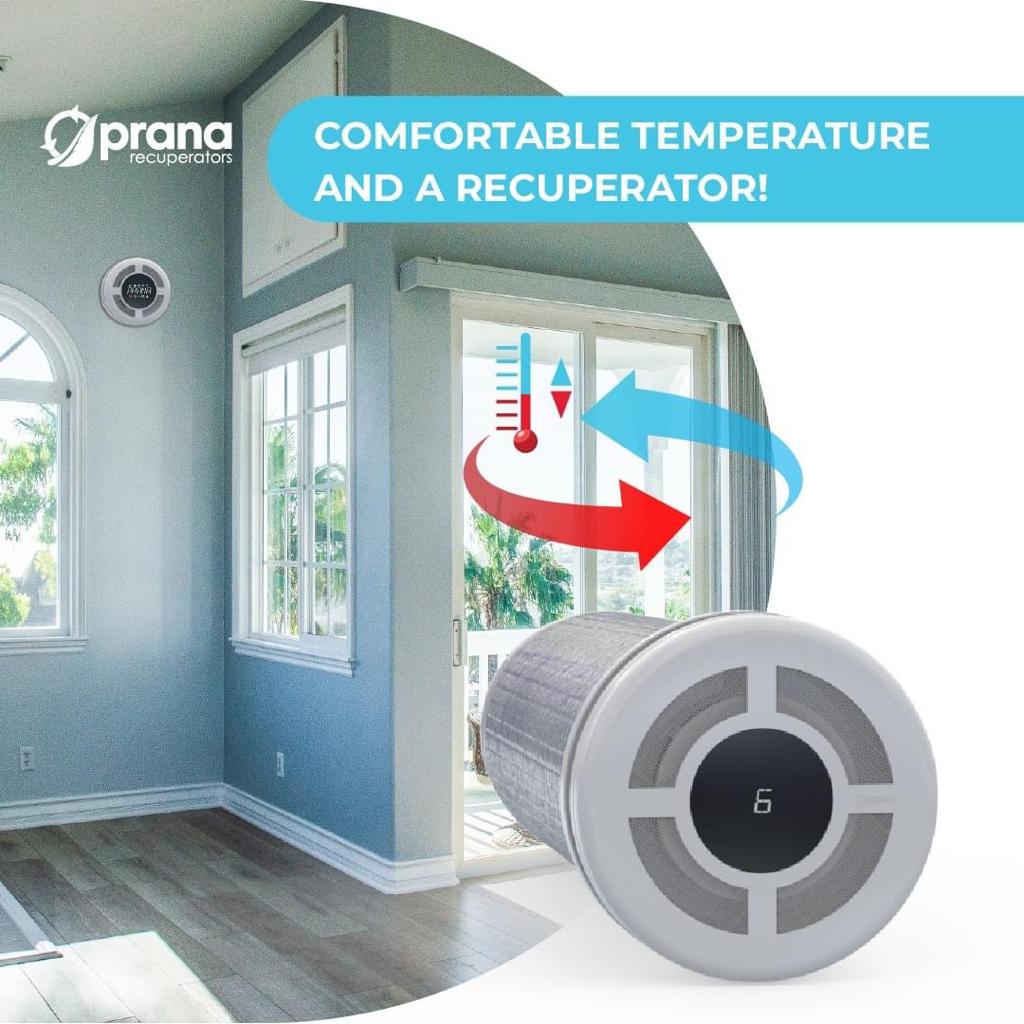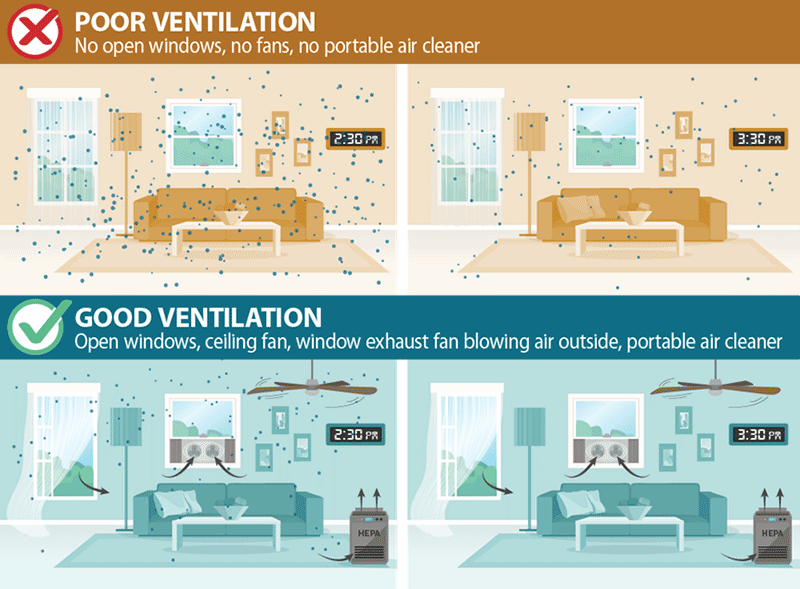Home Ventilation Melbourne Safety Tips for Cleaner Indoor Air
Understanding the Value of Home Ventilation for a Healthier Living Setting
Home air flow plays an important duty in keeping a healthy and balanced living setting. It promotes the exchange of outside and indoor air, which is necessary for enhancing air top quality. Without correct air flow, homes can end up being reproducing premises for irritants and toxins. The effects of poor air blood circulation can be considerable. This brings up the query of exactly how house owners can efficiently implement ventilation methods to guard their health and well-being. Comprehending these techniques is important.

The Essentials of Home Air Flow
Home air flow serves as a necessary part of interior air top quality and comfort. It includes the process of exchanging stale indoor air with fresh outdoor air, consequently minimizing moisture and managing temperature. Appropriate ventilation systems can include all-natural methods, such as open home windows and vents, as well as mechanical systems, such as exhaust followers and air exchangers. Efficient home ventilation helps avoid concerns like indoor mold and mildew development and the build-up of damaging bits. It also enhances overall energy performance, as well-ventilated areas can preserve comfy temperatures with much less dependence on heating and cooling down systems. Understanding the basics of home air flow is crucial for house owners seeking to create a healthier living setting for themselves and their families.

Usual Resources of Indoor Air Pollution

Lots of may not realize it, interior air contamination can stem from numerous sources within a home. Common factors consist of volatile natural compounds (VOCs) produced from paints, solvents, and cleaning products. Home appliances, such as gas cooktops and fire places, can launch harmful gases like carbon monoxide gas and nitrogen dioxide. Furthermore, mold and mold thrive in damp locations, releasing spores that impact air high quality. Family pet dander, allergen, and pollen can gather inside your home, more aggravating contamination degrees. Smoking cigarettes inside generates poisonous chemicals that stick around in the air. Lastly, constructing materials, consisting of asbestos and formaldehyde, can off-gas damaging compounds. Recognizing these resources is crucial for maintaining a much healthier interior environment and advertising effective air flow methods.
Health Results of Poor Air Flow
Interior air contamination can have significant health effects, especially when air flow is inadequate. Poor ventilation can bring about the buildup of unsafe contaminants, such as unpredictable organic compounds, mold and mildew, and particle issue. This buildup might result in respiratory system issues, including asthma, allergies, and persistent obstructive lung condition. People may experience signs like headaches, fatigue, and inflammation of the eyes, nose, and throat. Prone populations, such as kids and the senior, go to greater risk for serious wellness effects. here Long-term exposure to poorly aerated environments can likewise add to more serious problems, consisting of heart diseases. Consequently, ensuring appropriate ventilation is essential for maintaining a healthy living atmosphere and lowering the threat of wellness difficulties connected with indoor air pollution.
Effective Air Flow Techniques for Your Home
Proper ventilation is necessary for preserving a healthy and balanced indoor environment, and implementing effective methods can substantially enhance air quality. Property owners can start by ensuring that exhaust fans are mounted in restrooms and kitchen areas to get rid of excess wetness and odors. Opening up windows on a regular basis allows fresh air to distribute, particularly during light weather. Furthermore, using air cleansers with HEPA filters can assist record airborne contaminants. For homes with home heating and cooling systems, keeping HVAC systems and altering filters routinely is crucial for peak efficiency. Incorporating all-natural air flow techniques, such as cross-ventilation, can likewise improve air movement. Securing any leaks in doors and windows stops undesirable drafts, which can interfere with regulated airflow, ultimately leading to improved indoor air high quality and comfort.
Keeping Ideal Air High Quality Year-Round
To preserve excellent air top quality year-round, property owners have to take on a proactive approach to handling their indoor atmosphere. Consistently keeping track of interior air quality is critical; this includes monitoring for toxins such as dirt, mold, and unstable organic compounds (VOCs) Implementing effective ventilation systems, such as exhaust fans and air purifiers, can significantly decrease air-borne contaminants. Furthermore, routine upkeep of HVAC systems warranties peak efficiency and air blood circulation. Homeowners should additionally take into consideration moisture degrees, as too much wetness can result in mold growth. Seasonal changes might require adjustments in air flow approaches to suit varying outdoor air top quality. By prioritizing these practices, house owners can create a much healthier living area, promoting overall well-being for all occupants throughout the year.
Often Asked Questions
Just How Can I Tell if My Home Needs Much Better Ventilation?
To determine if a home needs better air flow, one need to observe indications such as persistent moisture, mold growth, stuffy odors, condensation on windows, or raised allergy signs and symptoms, indicating poor air flow and possibly bad interior air quality.
What Are the Indications of Poor Indoor Air Quality?

Can Houseplants Improve Indoor Air Quality Properly?
The efficiency of houseplants in boosting interior air high quality is debated. While some research studies recommend they can take in contaminants and produce oxygen, their general influence may be very little contrasted to correct ventilation and air purification systems.
How Often Should I Modification My Air Filters?
The regularity of air filter modifications commonly depends upon use and filter kind. Normally, it is recommended to replace filters every three months, though houses with animals or allergic reactions might require even more frequent modifications for perfect performance.
Exist Any Kind Of Details Ventilation Systems for Allergy Sufferers?
Several ventilation systems, such as HEPA-filtered systems, properly lower see here now irritants airborne. Home Ventilation Melbourne. These systems catch animal, dirt, and plant pollen dander, offering allergic reaction victims with a cleaner, much healthier interior atmosphere while handling air quality successfully
It promotes the exchange of interior and exterior air, which is important for improving air quality. Home air flow offers as a crucial part of indoor air top quality and convenience. It entails the procedure of exchanging stagnant interior air with fresh outside air, thus minimizing humidity and controlling temperature level. Interior air pollution can have find more information significant wellness effects, especially when ventilation is inadequate. Proper ventilation is necessary for preserving a healthy interior atmosphere, and implementing efficient methods can greatly improve air high quality.